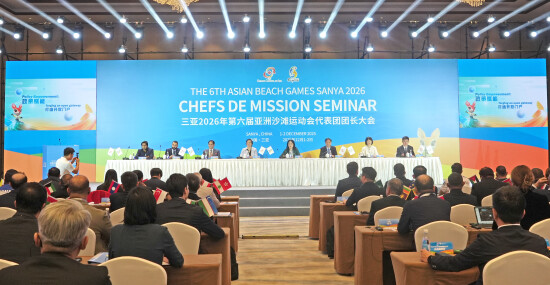China has successfully held its Forum on China-Africa Cooperation, with countries from the AU (African Union) front and centre during proceedings.
The two countries that did not participate were Eswatini and the Sahrawi Arab Democratic Republic, which have no diplomatic relations with China. Twenty-four leaders were reported to have participated.
Despite African countries complaining about summit fatigue, with recent summits held with Russia, Italy, South Korea, the US and Indonesia, as well as Japan next month, they still turned up in large numbers in Beijing. China’s ability to attract most of the African leaders to a summit demonstrates that it is still being wooed by countries of the global south.
Beijing describes itself as a developing country seeking south-to-south cooperation, even though African countries do not see China as a member of the global south. In using this language, China is challenging the narrative built by India through the G20 and its Voice of Global South summits.
It wants to prevent India from commandeering the voice of the global south for itself. The country announced a US$59 billion budget to implement 10 partnership programs in Africa. Some have interesting nomenclature, such as “mutual learning among civilizations, but there are traditional aspects covered, including green economy, development and supply chain collaboration, connectivity, healthcare cooperation and people-to-people exchanges.
African nations like obtaining Chinese funds for their development, but do not want further debt stress. Of the US$59 billion offered, US$30 billion would be loans, with the remainder coming from interest-free loans and grants.
About US$10 billion would be for foreign direct investment by Chinese companies in Africa. The commitment works out to about US$10 billion annually until 2027.
This is similar to earlier Belt and Road Initiative (BRI) commitments. Last year, Chinese loans to eight African countries were worth US$4.6 billion.
Between 2000 and last year, Chinese financial institutions lent US$182.28 billion to 49 African countries and seven regional development finance institutions (DFI), an analysis by Boston University’s Global Development Policy Centre showed. Angola, Ethiopia, Egypt, Nigeria and Kenya are the major borrowers and have the most debt.
African leaders have spoken to Chinese leaders about the imbalance in their trade. China is the continent’s largest trading partner but has a surplus of US$63.5 billion, whilst African leaders seek better access for African products and to add value to processing minerals and resources that China acquires from African sources.
China has announced that it would allow tariff-free imports from African Least Developed Countries (LDCs) to help their exports. India had also announced a Duty-Free Tariff Preference scheme for all African LDCs in 2008.
This was augmented by an influx of Indian foreign direct investment (FDI) from micro, small and medium-sized enterprises (MSMEs) into African countries to produce items in the agriculture and industrial sectors that India required. This has worked better on agro-processing so far.
Would China channel its FDI into such buyback arrangements? However, China’s main economic partners in Africa are not LDCS and are outside the ambit of this scheme.
China would pursue more BRI projects ,despite a poor run in implementing those already contracted. BRI projects in Africa often lack business plans, do not build local capacities nor provide local companies with subcontracting.
The emergent trains, for instance, do not meet financial goals and cause debt stress to the host country. However, they find it difficult to borrow from others, so they return to China.
Weak regulatory capacity among several African countries makes borrowing and repayments a difficult task. Most Chinese loans are compounded by restrictive options for restructuring and are not part of the norms of other lenders.
The proposal to launch yuan-denominated bonds in African markets seems difficult, but it can reduce local costs and alleviate hard currency swaps. It would of course help to internationalize the yuan. Thirty new projects are mentioned by China.
One is the renewal of the Zambia-Tanzania TAZARA Railway to transport Zambian minerals through Tanzanian ports. This would challenge the newer plan by the US to build a Zambia-the Democratic Republic of the Congo rail link to move minerals from the Atlantic port of Matadi.
Africa has newer alternatives emerging and can leverage them for better deals from Beijing, since China clearly sees it as a battleground in its global rivalry with the US. A total of 1 billion yuan (US$141.2 million) in emergency food aid and support for the development of MSMEs were also announced.
China said it would expand its Global Security Initiative by providing military cooperation of up to 1 billion yuan for training and capacity building of select African countries. A total of 6,000 African troops are expected to visit China under this program. Joint exercises and patrols are also on the table.
China is seeking to follow the tradition of Russia: Stepping into countries from where Western partners, mainly France, have exited. Unlike Russia’s paramilitary option, China is offering a capacity building approach to acquire military influence in target countries.
As China moves to jointly build an all-weather China-Africa community with a shared future for the New Era, it is expected to prioritize African preferences as laid out in the AU’s Agenda 2063. Yet by giving the AU a guest role and working mainly bilaterally, China seeks more access to critical minerals and resources while expanding its reach for national prestige and African votes in UN bodies.











